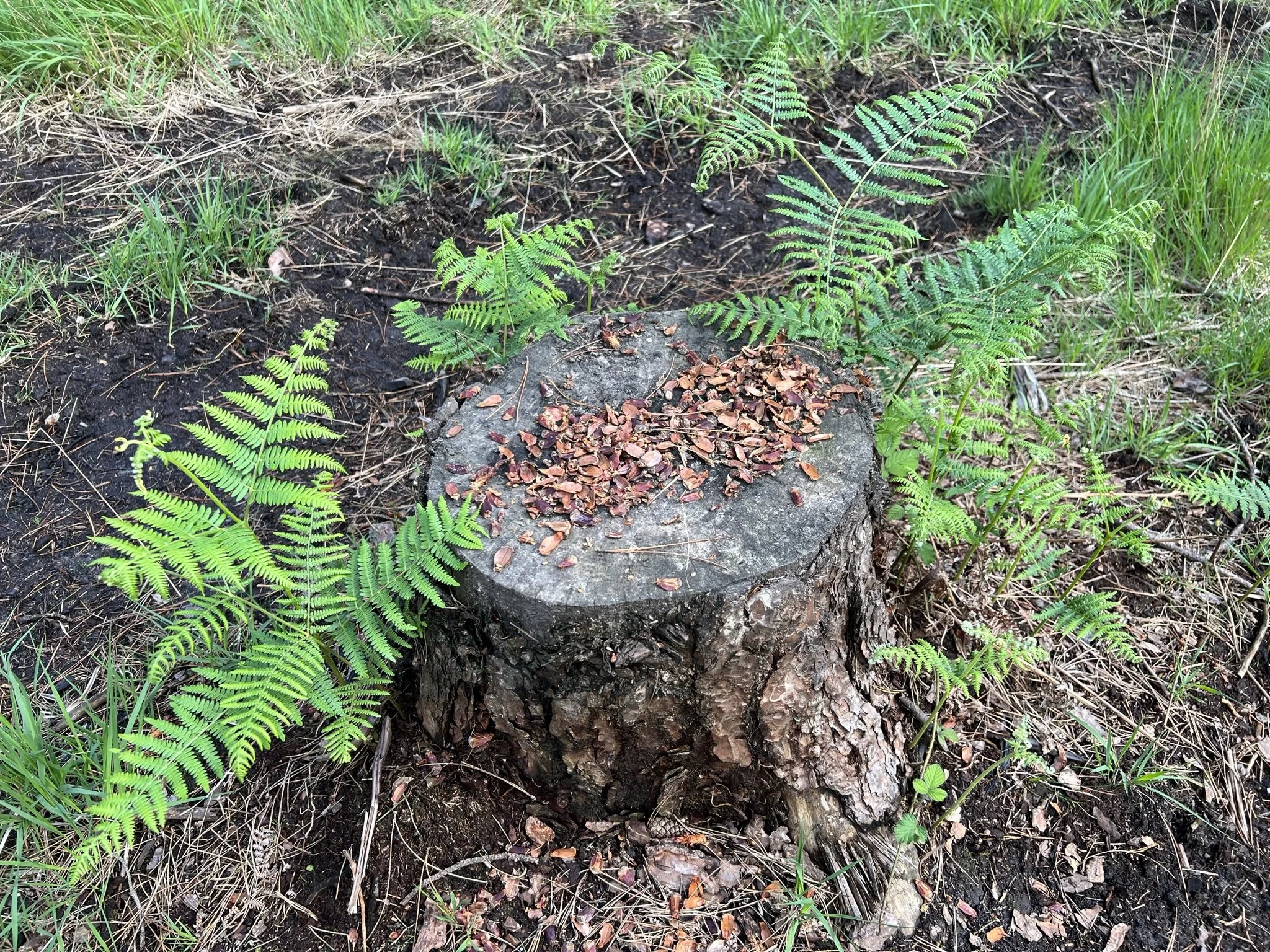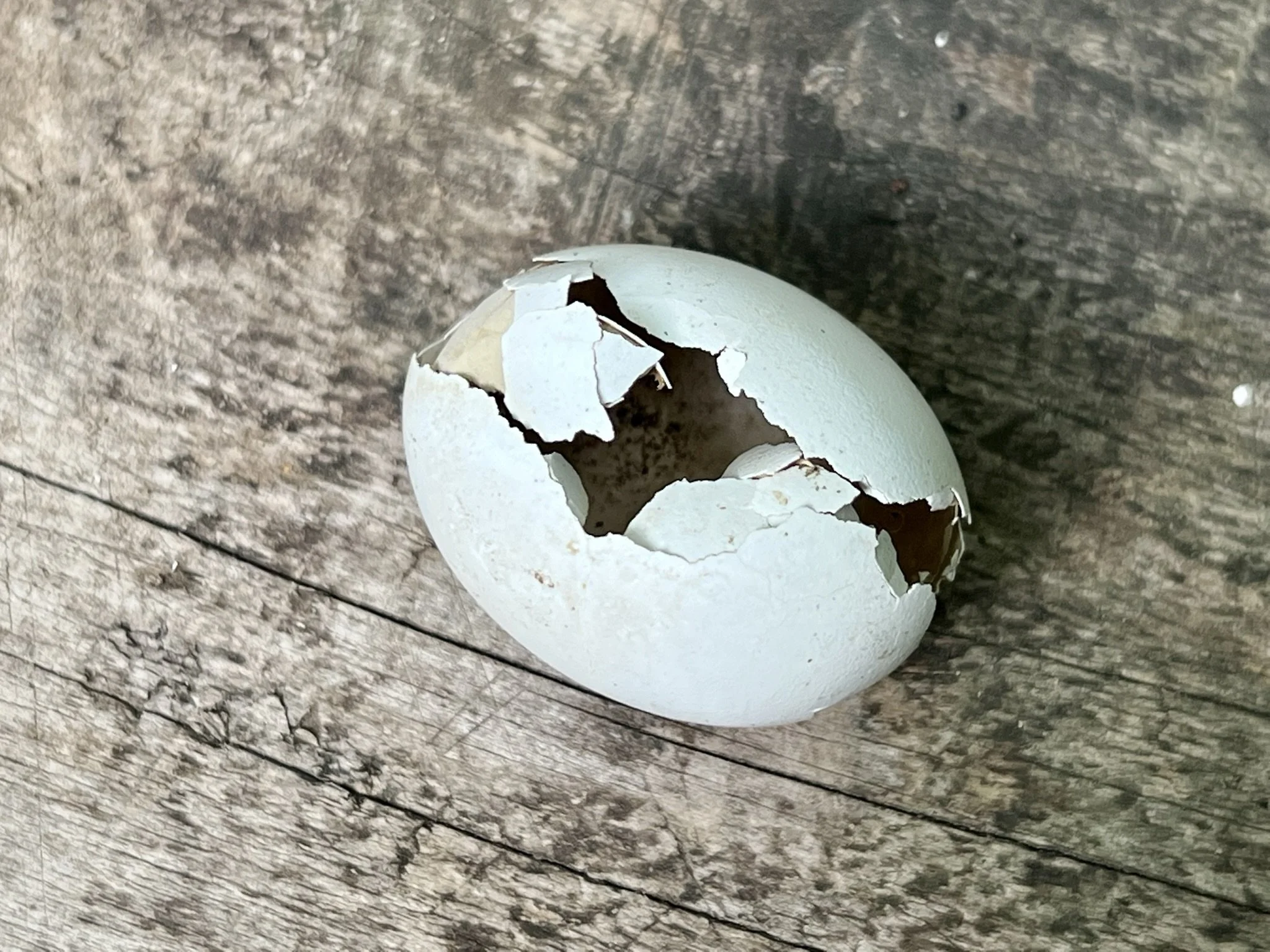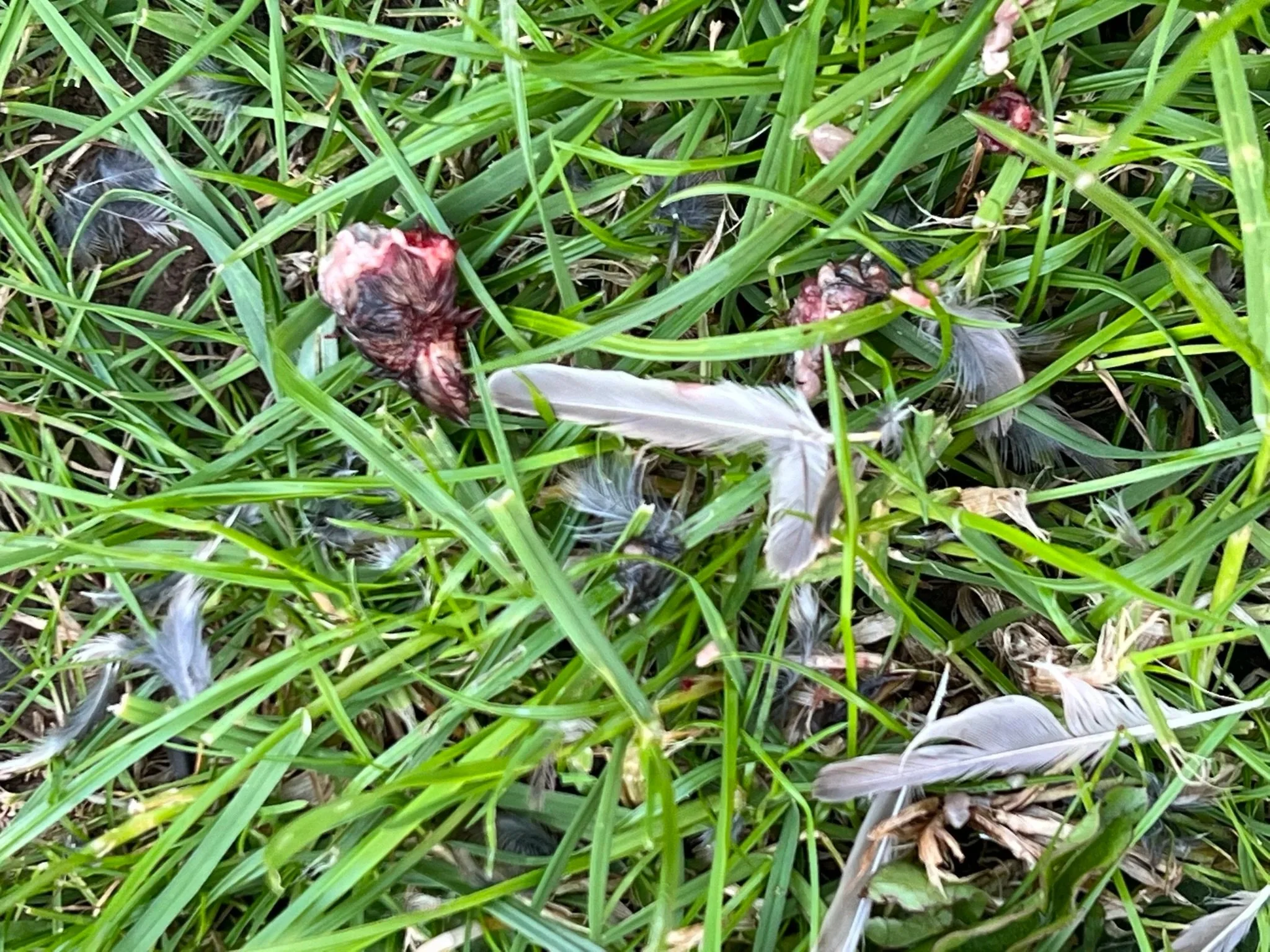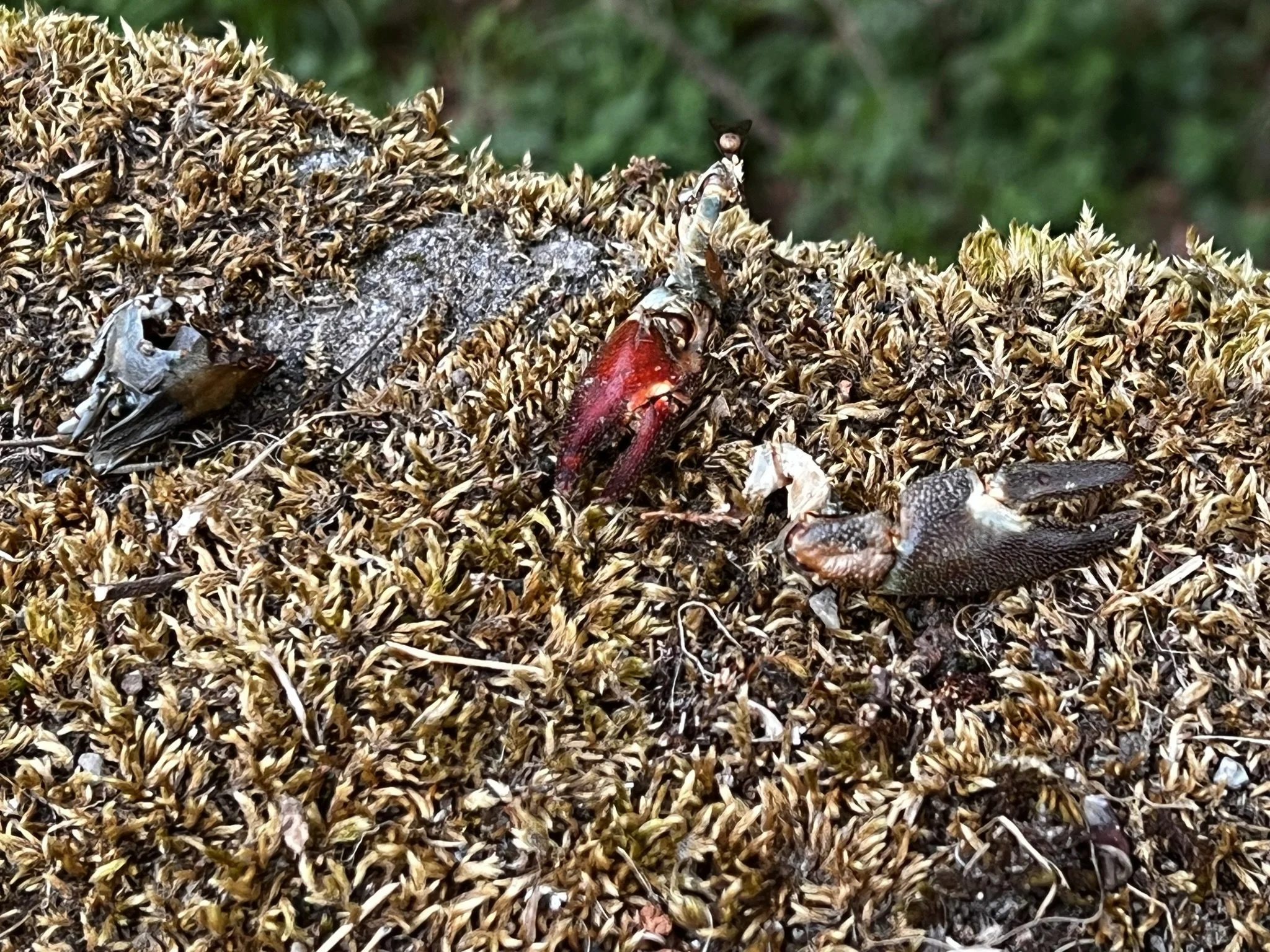Reading the Nibbles: Feeding Signs as Wildlife Clues
When you’re out in the field, you won’t always see the animals themselves, but you’ll often see the evidence of their passing. Half-chewed hazelnuts, a broken eggshell, bark stripped from a tree, or the scattered remains of prey. These feeding signs are like footprints in the story of survival: each one carries the mark of the species that left it.
What we have below is just the tip of the iceberg (and there are literally dozens of books available to help the budding tracker, look here for a list of useful books) so let’s walk through some examples that you might find on your next walk in the woods.
1. Hazel Nuts: A Mammal’s Calling Card
Take a close look at the hazelnut shells in this photo. Each species leaves its own trademark:
Wood mice leave ragged holes, often with teeth marks angled inside the nut.
Bank voles nibble neatly, leaving parallel grooves around the edge.
Squirrels split shells more roughly, often leaving splintered edges.
The second nut shows those classic parallel scrape marks: a likely vole. With practice, you can identify species just from the pattern of bites.
2. Bird Remains: Predators at Work
The partially eaten bird carcass in this photo is a rich source of clues. Note the plucked wing feathers and exposed sternum bone. These clean signs point to a bird of prey rather than a mammal.
Raptors pluck feathers carefully, pulling them out intact.
Mammals such as foxes or stoats bite through shafts, leaving crushed or cut quills.
The presence of the sternum with scoring suggests a powerful raptor — possibly a goshawk or buzzard — tearing into the breast muscle.
3. Squirrel Dining Table: The Midden
A tree stump covered in hazelnut shells is a classic squirrel midden. Squirrels often use the same spot repeatedly, leaving a heap of shells that can grow large over a season.
Red squirrels tend to bite neatly into the side of a nut and split it in two.
Grey squirrels leave rougher, gnawed openings.
Finding a midden is a sure sign of squirrel presence and is a great place to set up a camera trap or sit quietly for photos.
4. Plucking Posts and Feather Remains
Scattered feathers tell another story. Birds of prey and mammals leave very different clues:
Raptors (sparrowhawks, goshawks, buzzards, owls) pluck feathers cleanly, leaving intact shafts. Sometimes you’ll find “plucking posts” — logs or stumps used repeatedly.
Mammals (fox, stoat) shear feathers with teeth, leaving quills cut or crushed. Often you’ll find clumps of feathers stuck together with saliva wiped on the ground.
5. Eggshells: Birth or Predation?
A broken eggshell on the woodland floor may signal either a successful chick hatching or a predator’s meal.
Chicks hatching: shells are cleanly broken into two, usually with the inside membrane visible.
Predation: shells are crushed or pierced. Crows, magpies, squirrels, and stoats all raid nests.
This egg photo shows irregular breaks and missing fragments, suggesting it was preyed upon rather than hatched.
6. Bark Stripping and Tree Scars
The stripped bark in this photo is classic deer sign. Roe, fallow and red deer will strip bark to reach sapwood, especially in winter. Deer will also fray trees and bushes with their antlers. Look for:
Vertical frays from antler rubbing.
Chewed patches where bark has been gnawed off, often leaving tooth marks.
This isn’t just damage — it’s a clear indication of deer presence, behaviour, and seasonal feeding pressure.
7. Wasp Nests and Insect Remains
That honeycomb of paper is a wasp nest remnant, probably dug out by a badger. Badgers are expert insect predators, digging out wasp nests and eating the larvae with little regard for stings. If you see scattered fragments like this on grassland, look for further signs of badger activity.
8. Amphibians and Birds on the Menu
Bird remains with the head and wings discarded often point to raptors, which consume the breast and leg muscles but leave less nutritious parts behind. This image is the remains of a sparrowhawk kill. Also look for Amphibian remains as they are a favourite food of herons, grass snakes, otters, and foxes.
9. Crayfish Remains: Riverbank Evidence
This final photo shows the picked-apart remains of a crayfish. These are usually left by predators that specialise in watery hunting:
Otters often crunch through the softer abdomen and discard the tougher claws, leaving remains on mossy rocks or grassy banks.
Mink are messier, scattering fragments along the bank, sometimes alongside frog or bird remains.
Herons also feed heavily on crayfish, especially in shallow margins. Smaller individuals are swallowed whole, but larger ones may be broken apart with powerful shakes of the bill. This often leaves big, less “processed” fragments right at the water’s edge.
Clues like where the remains are found (on a log, up a bank, or in the shallows) and what condition they’re in (crushed vs snapped, scattered vs neat) can help you decide which predator was responsible.
Fieldcraft for Photographers
Why does all this matter for photography? Because feeding signs tell you where to focus your effort:
Fresh hazel nut middens can reveal a squirrel or dormouse hotspot.
A plucking post is a perfect place to set a camera trap.
Stripped bark shows deer are active — a good spot to sit quietly at dawn.
Badger wasp raids can lead you to setts or night-time foraging grounds.
Crayfish remains on riverbanks may point you towards otters, mink, or even herons.
By learning to “read the nibbles,” you can predict behaviour, find wildlife ethically, and let the animals reveal themselves to you.
Final Thought
Every gnawed nut, every broken eggshell, every feather is part of a story. Train yourself to stop, crouch, and look closer. Soon, you’ll find the landscape is alive with signs — a hidden layer of life that most people walk past unnoticed.
———————————
Frequently Asked Questions (FAQ) — Feeding Signs & Wildlife Clues
Q: What are feeding signs and why do they matter?
A: Feeding signs are the remains or marks left behind when an animal has eaten: chewed nuts, stripped bark, feathers, shells, insect nests, or carcass fragments. They’re valuable because they provide evidence of which species are using a habitat, what they eat, and possibly how they behave (time, location, frequency). Over time, tracking these signs builds a map of wildlife activity that can guide photographers, naturalists, and surveyors.
Q: Can feeding signs be misleading or misinterpreted?
A: Yes, misinterpretation is a risk. Some pitfalls:
Scavengers may rearrange remains (e.g. foxes dragging feathers).
Multiple predators may feed on the same carcass at different times.
Environmental disturbance (rain, wind) may scatter or wash away clues.
That’s why context matters — location, surrounding signs, repeated visits all help build confidence in your interpretation.
Q: How fresh does a feeding sign need to be for it to be useful?
A: The fresher the better. Day-old signs retain sharp detail: crisp quill ends, clean bone cuts, unmarred shell edges. Older signs fade: edges soften, fragments scatter, decomposition and weathering alter shapes. But even older signs have value — patterns over time (middens, recurring plucking posts) can tell you which species use a spot repeatedly.
Q: Are there ethical considerations in investigating feeding signs?
A: Yes. Always tread carefully:
Don’t linger too long at a fresh kill site — predators may return.
Avoid touching or moving remains unless necessary for documentation.
Photograph, record GPS, and leave the remains as you found them.
Don’t disturb cover, nests, or habitat in pursuit of a better view.
Q: How can I use feeding signs to improve wildlife photography or observation?
A: Use feeding signs to narrow your effort:
Plucking posts = good spots for placing remote cameras or hides.
Nut middens = likely squirrel or rodent zones.
Crayfish remains = possible places to monitor for otters or herons at dawn/dusk.
Stripped bark = deer routes or rub zones.
By focusing on signs, you let the animals lead you to where they already behave, instead of chasing them randomly.









